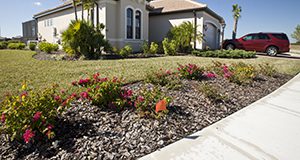
A foundation of integrated pest management (IPM) in urban landscapes is to put the right plant in the right place. This preventive tactic can reduce plant stress, pest infestations, and subsequent pesticide applications. Many urban tree species have more insect and mite pests in urban landscapes than in surrounding natural areas. This is due in part to stress created by impervious surfaces like roads and sidewalks that make the air hot and the soil dry. For red maples (Acer rubrum), more impervious surface area adds stress and worsens tree condition. This 4-page publication written by Adam G. Dale, Steven D. Frank, Elsa Youngsteadt, Barbara Fair, Julieta Sherk, and Michael Just and published by the UF/IFAS Department of Entomology and Nematology focuses on selecting red maple planting sites that will help reduce tree stress and scale insect pests by maximizing surfaces permeable to water.
http://edis.ifas.ufl.edu/in1185